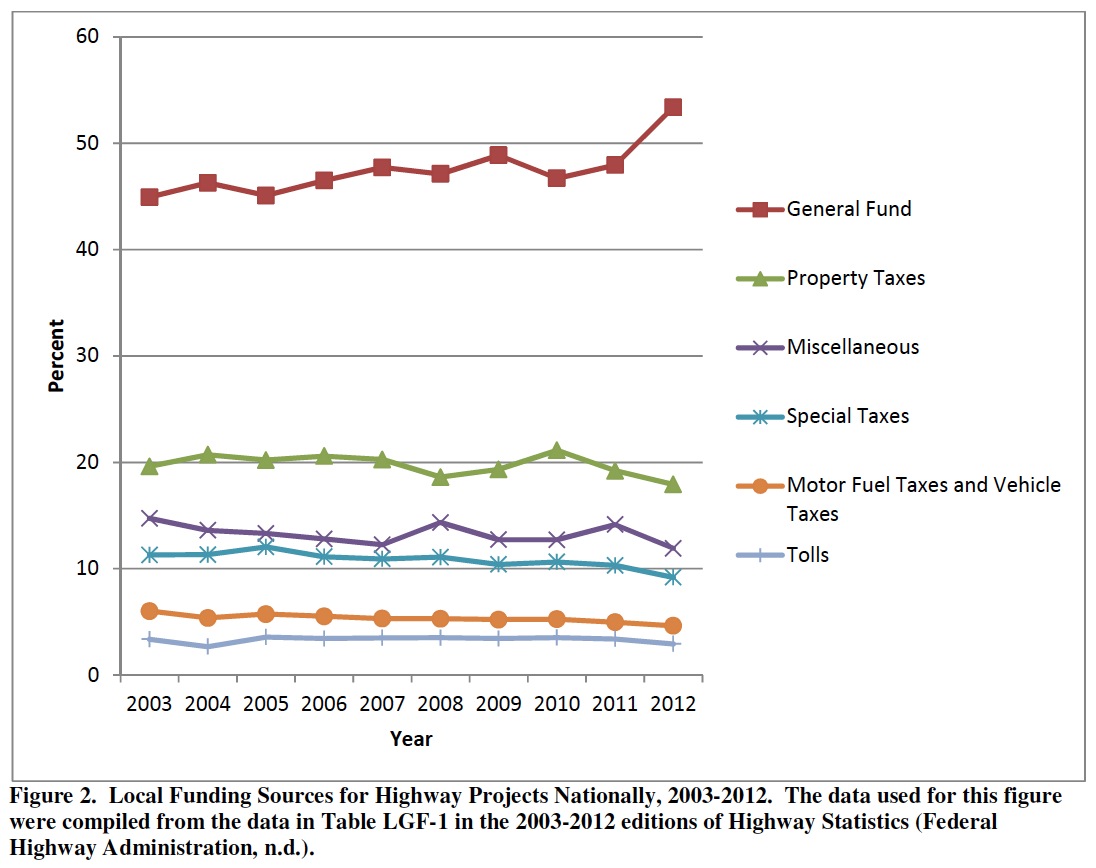VIRGINIA CENTER FOR TRANSPORTATION INNOVATION & RESEARCH
In Virginia, other than in independent cities; towns with populations over 3,500; and 2 of its 95 counties, the Virginia Department of Transportation (VDOT) has historically funded, constructed, and maintained all public roads. With the exceptions of Alaska, Delaware, North Carolina, and West Virginia, this is in contrast to other states, which have state oversight of primary roads but local control of and funding responsibility for secondary (or county) roads (O’Leary, 1998). Because state funding historically pushed projects along, local government funding was typically limited to small local match amounts and therefore was not critical. The downside of this arrangement is that when state funding sources dwindle, projects can stall. This has spurred some localities to seek ways to obtain local funding to continue their priority projects.
Virginia’s funding for secondary road construction declined by 65% from FY07 through FY11 (Gifford, 2011) for various factors including debt service and Virginia’s general downward revenue trend. According to the Code of Virginia (§ 33.1-23.1), funding for necessary maintenance is to take priority over funding for construction; Figure 1 illustrates the resulting recent trend in Virginia’s formula for allocating dollars for construction of new roads. Maintenance funding also declined substantially during the same years, and there was an increased need for local governments to step in if they desired new roadway projects, especially those of local or regional importance. Data gathering for this study was completed before Virginia’s 2013 transportation funding reforms, which substantially changed the funding structure, were enacted. It remains to be seen whether and how these changes will affect funding trends over the long term.
Problem Statement
VDOT recognizes the continuing challenge of providing funding for road projects through traditional means. Locally developed and funded projects often provide benefits to VDOT and Virginia as well as to the sponsoring localities. Several localities in Virginia have funded and financed road improvements using local bond issues, development proffers, and other strategies. However, no summary exists of their efforts, and there is a shortage of readily available information or case studies for Virginia localities that may want to know what locally generated funding options are available. As a result, VDOT is interested in promoting information exchange to facilitate project development using alternative funding sources where there is local support. This topic was a high priority of the Transportation Planning Research Advisory Committee, which provides input to the Virginia Center for Transportation Innovation and Research (VCTIR), and was recommended by a member of the committee who is on the staff at the Richmond Area Metropolitan Planning Organization. This recommendation was the impetus for this study.
Download full version (PDF): Local Government Funding and Financing of Roads
About the Virginia Center for Transportation Innovation & Research
vtrc.virginiadot.org
The Virginia Center for Transportation Innovation and Research is one of the nation’s leading transportation research centers. VCTIR specializes in basic and applied research to support VDOT, its primary customer. It also provides technical consulting and training of future transportation professionals through its work with U.Va. and other Virginia universities.
Tags: VA, VCTIR, VDOT, Virginia, Virginia Center for Transportation Innovation & Research, Virginia Department of Transportation







 RSS Feed
RSS Feed